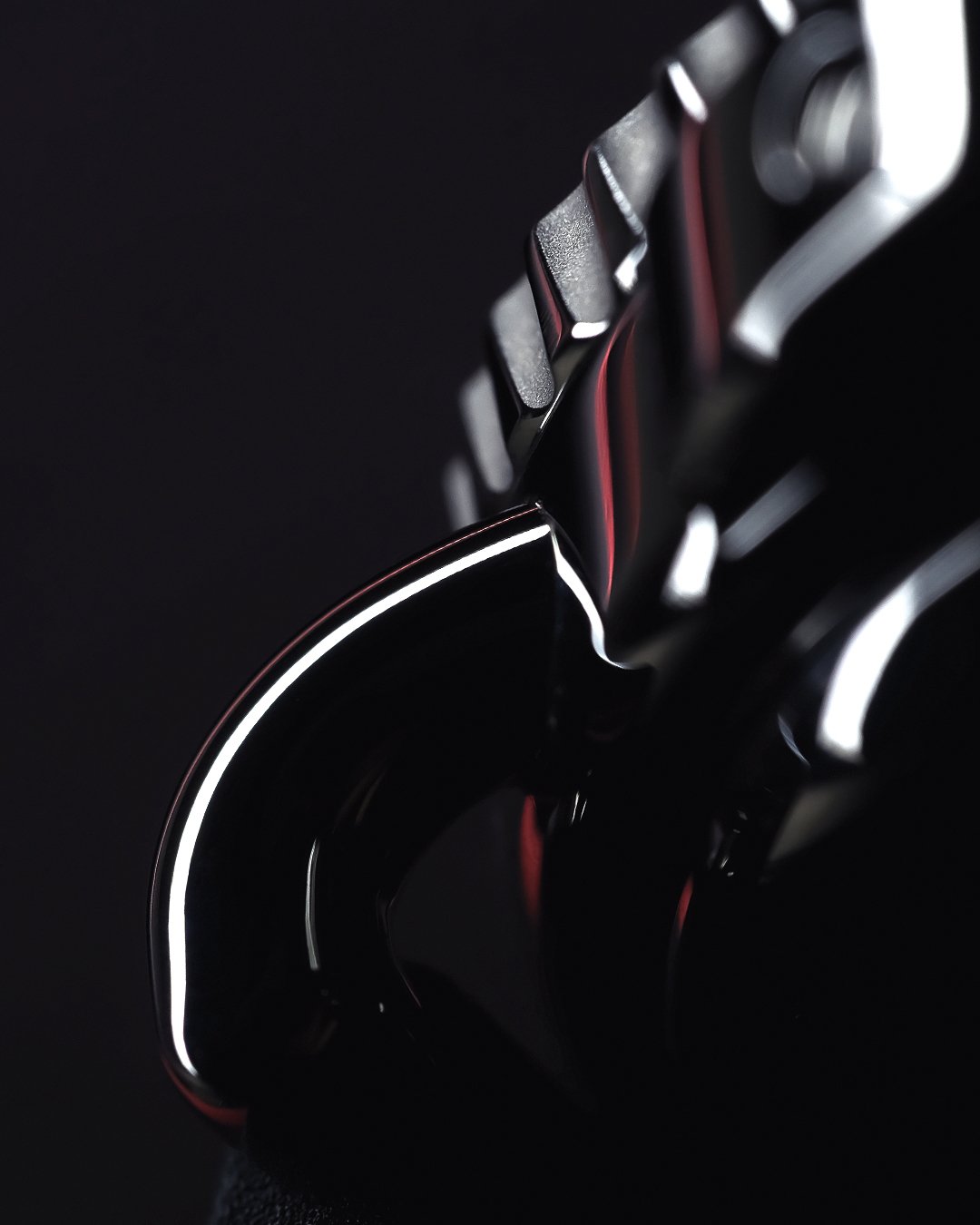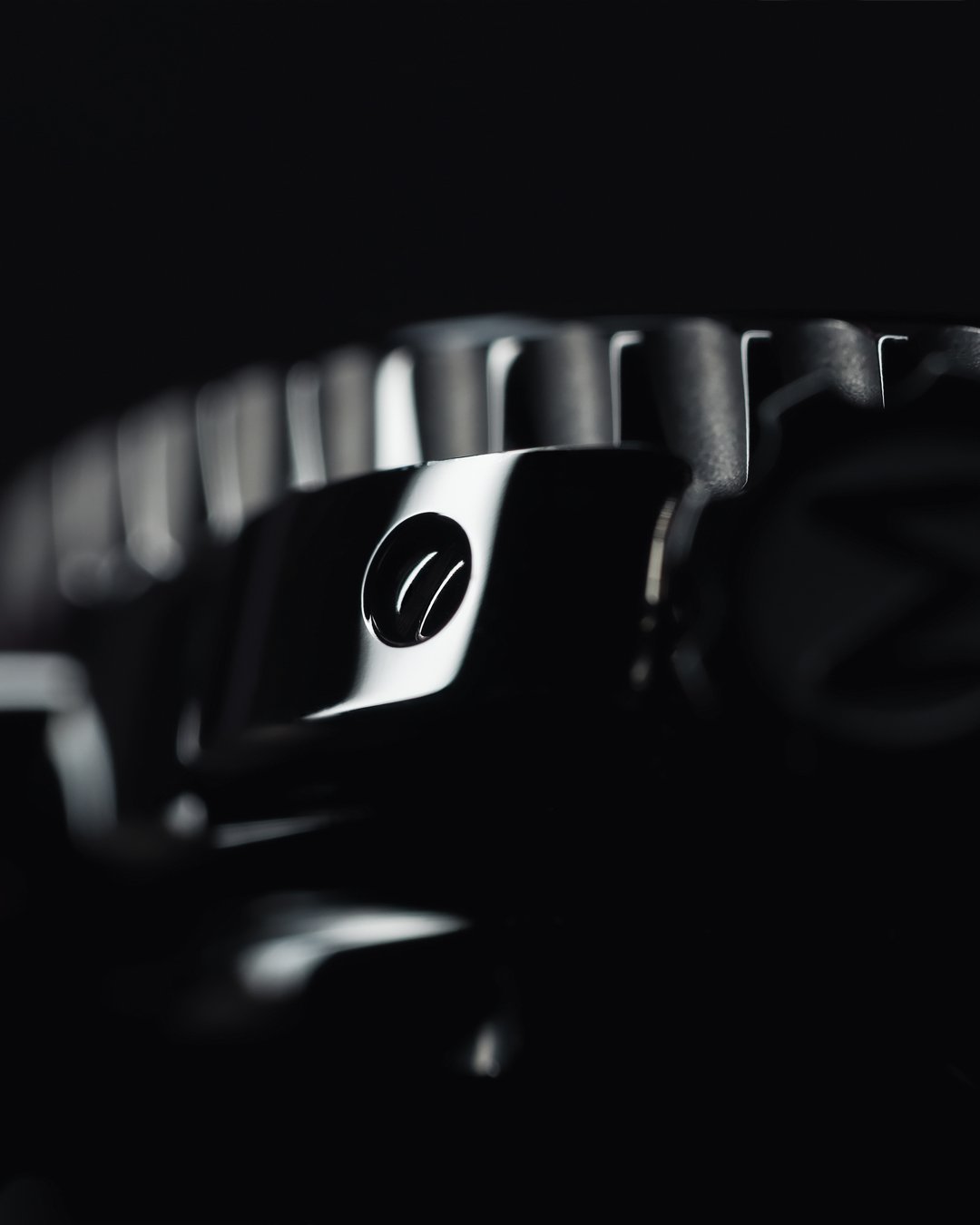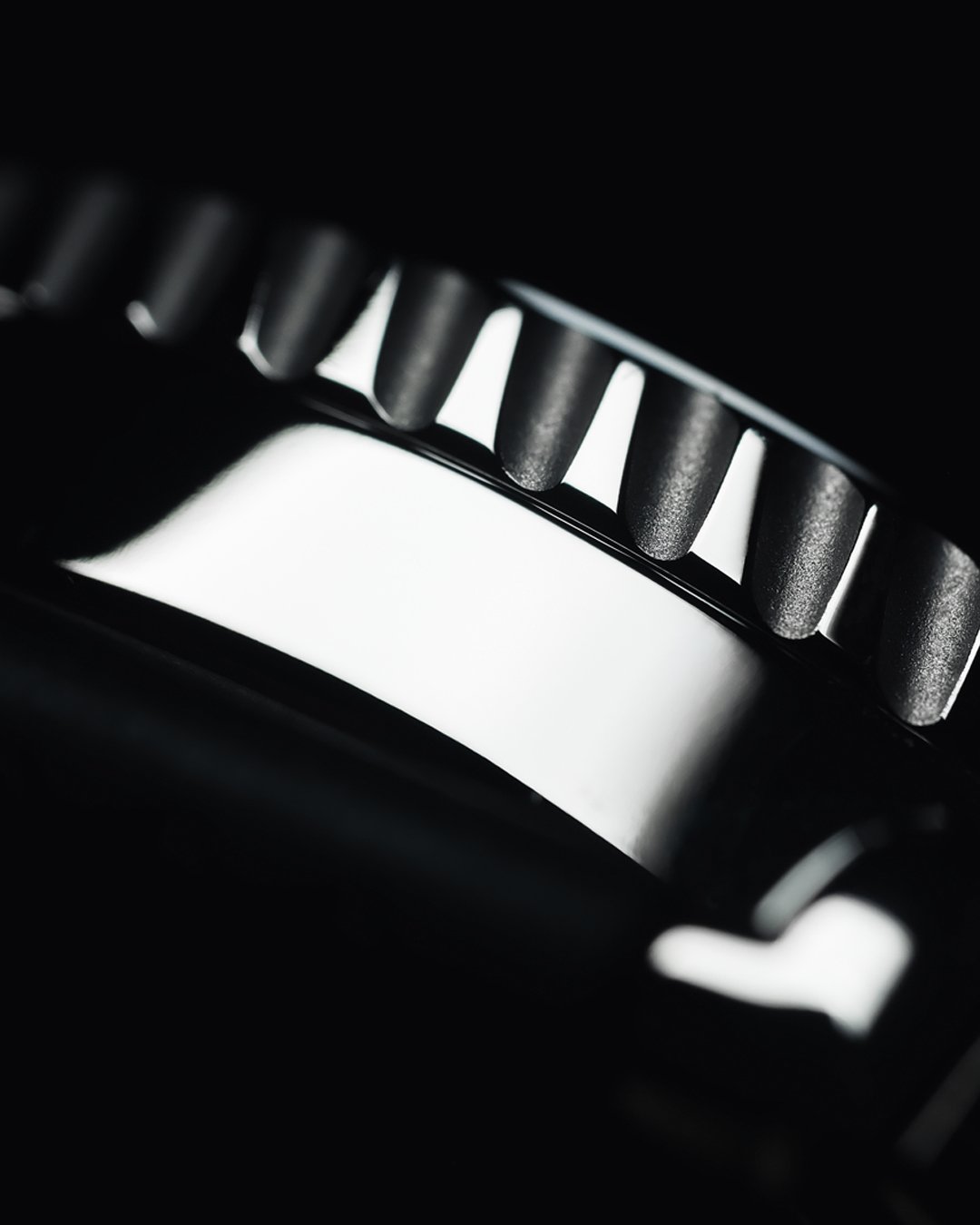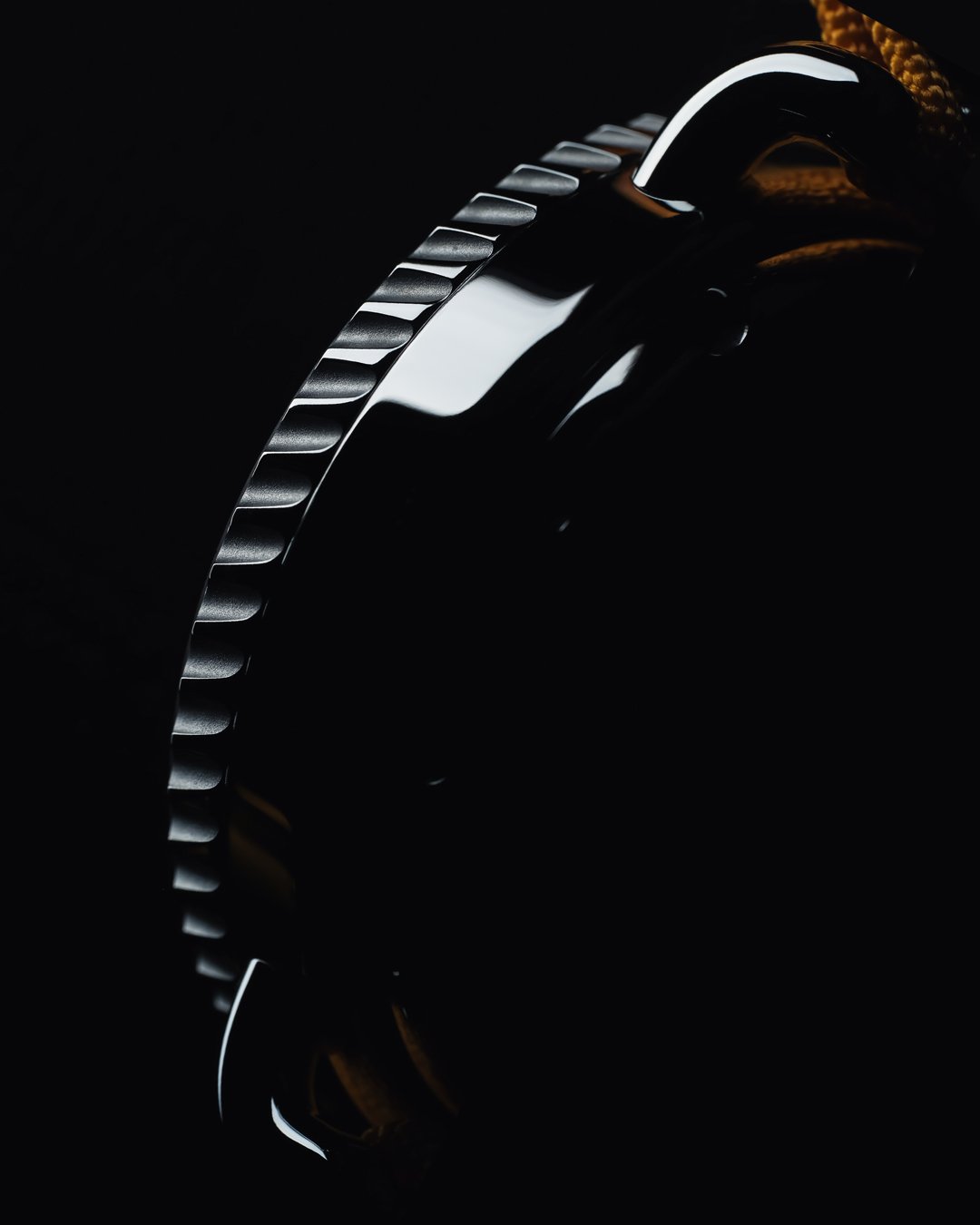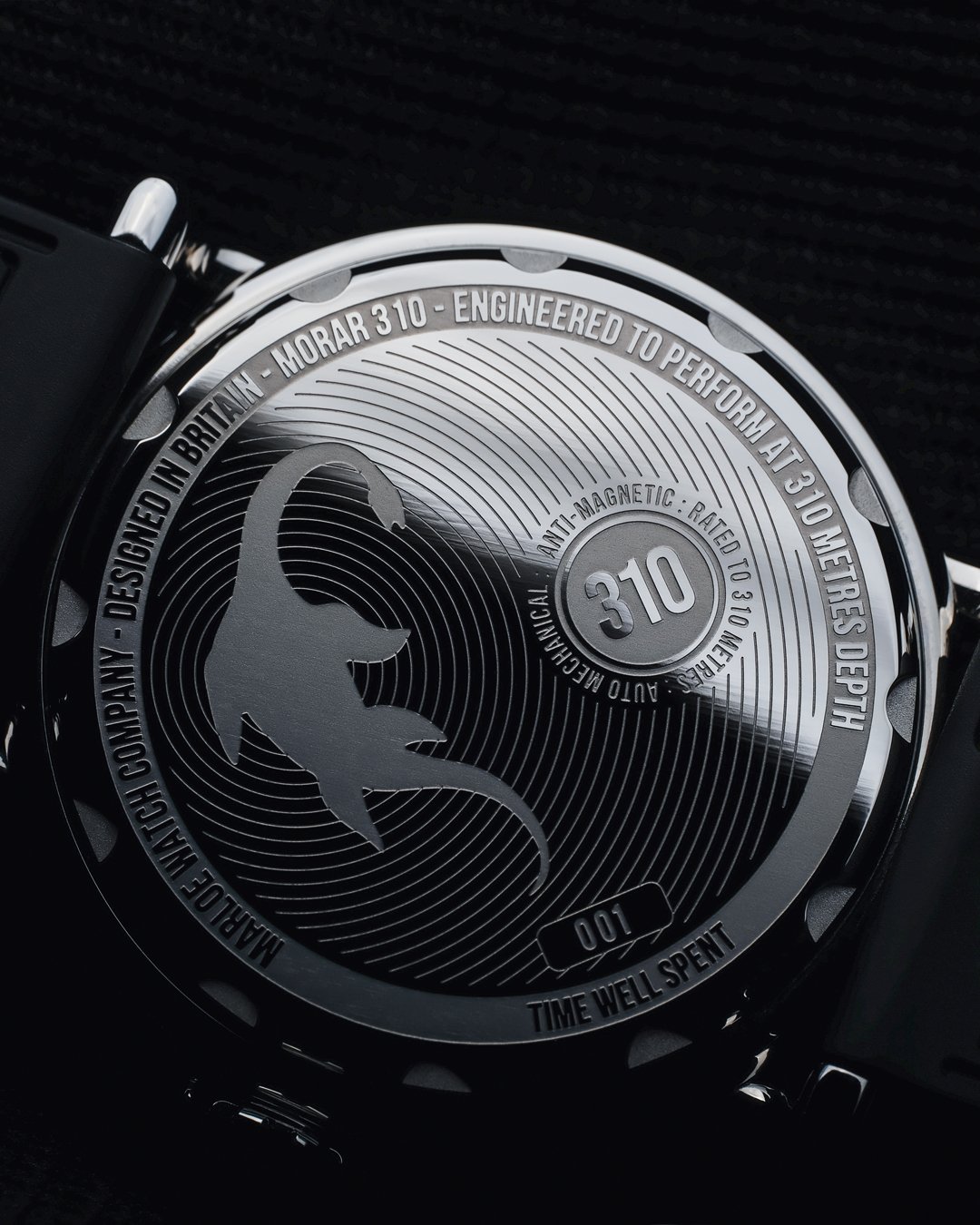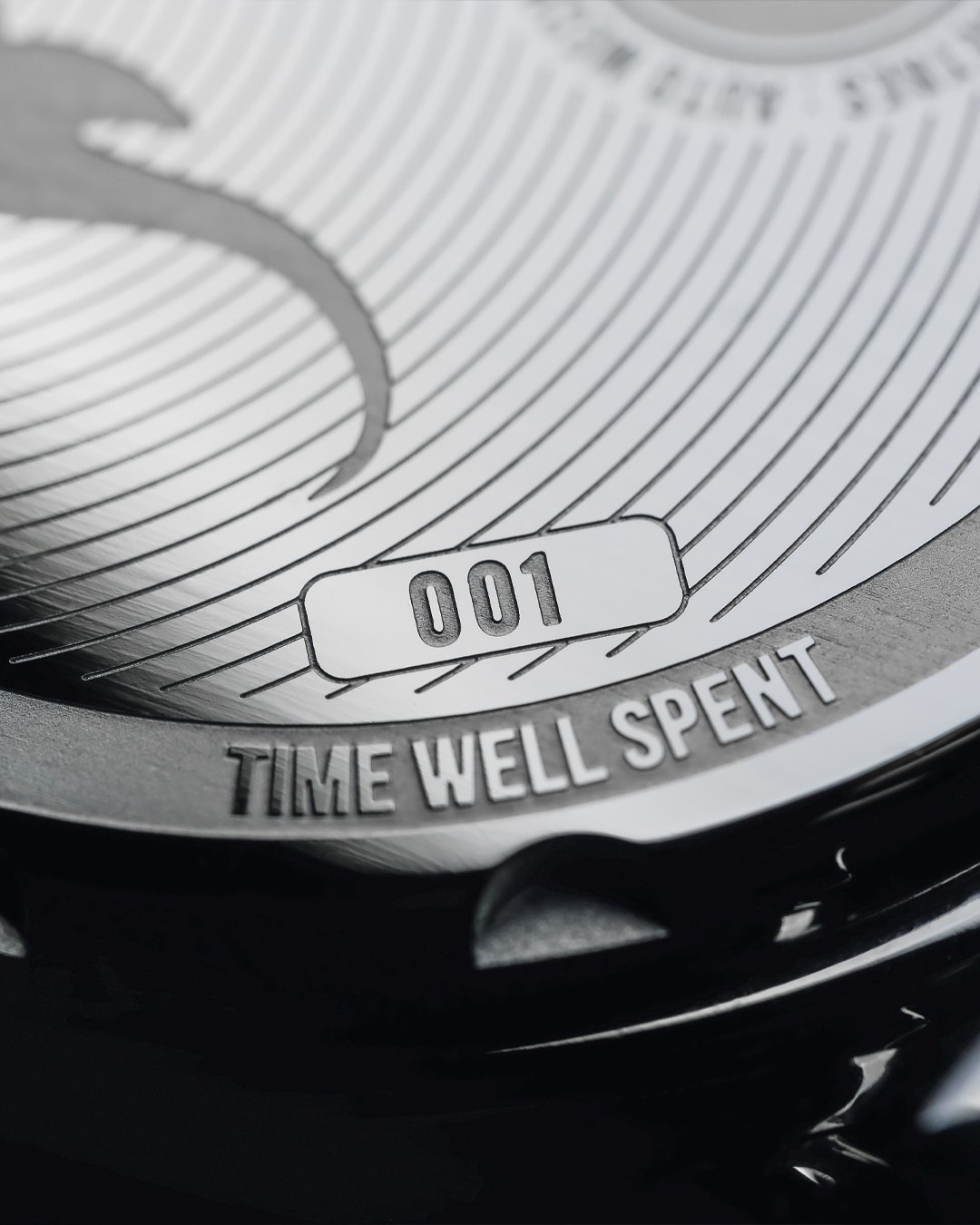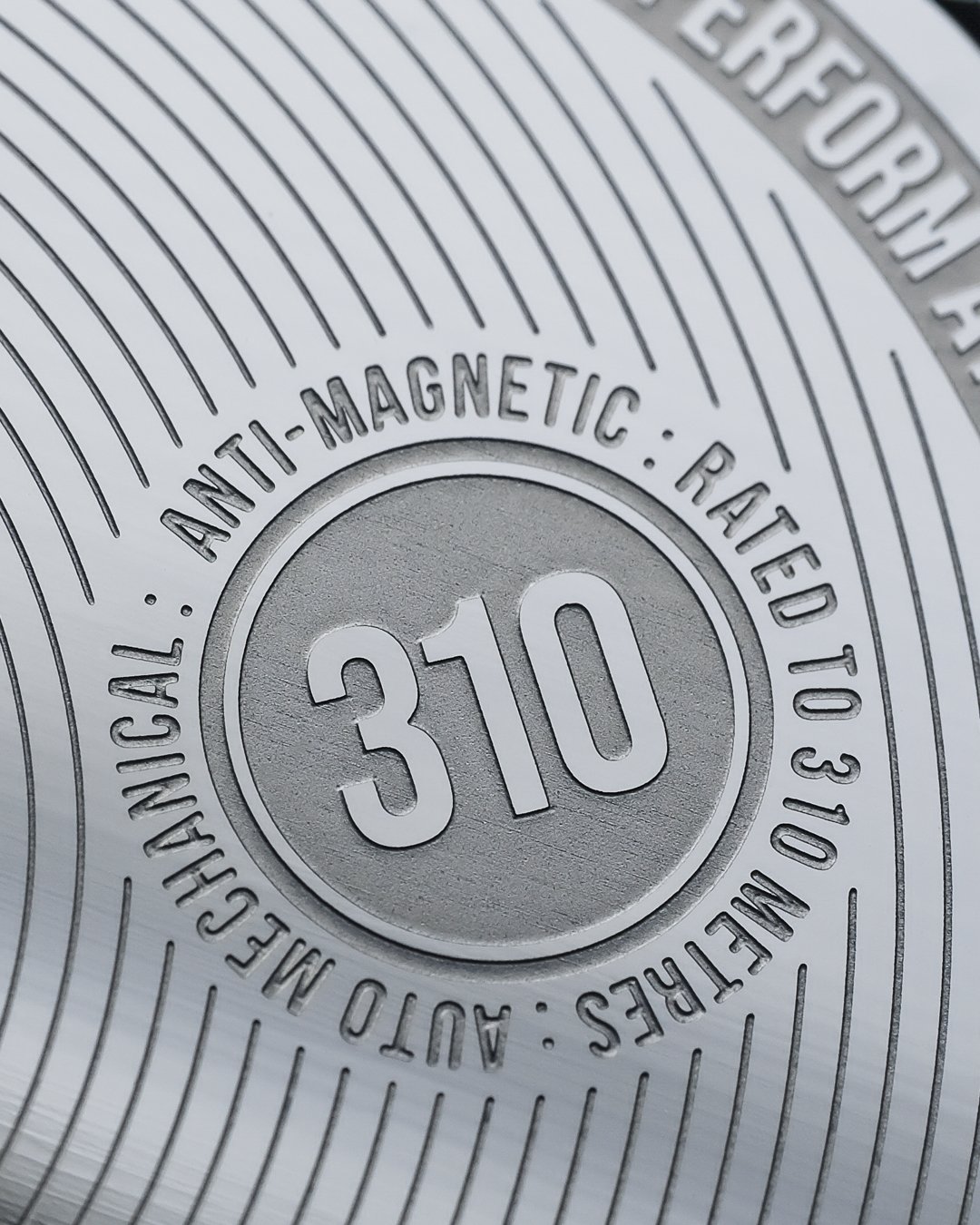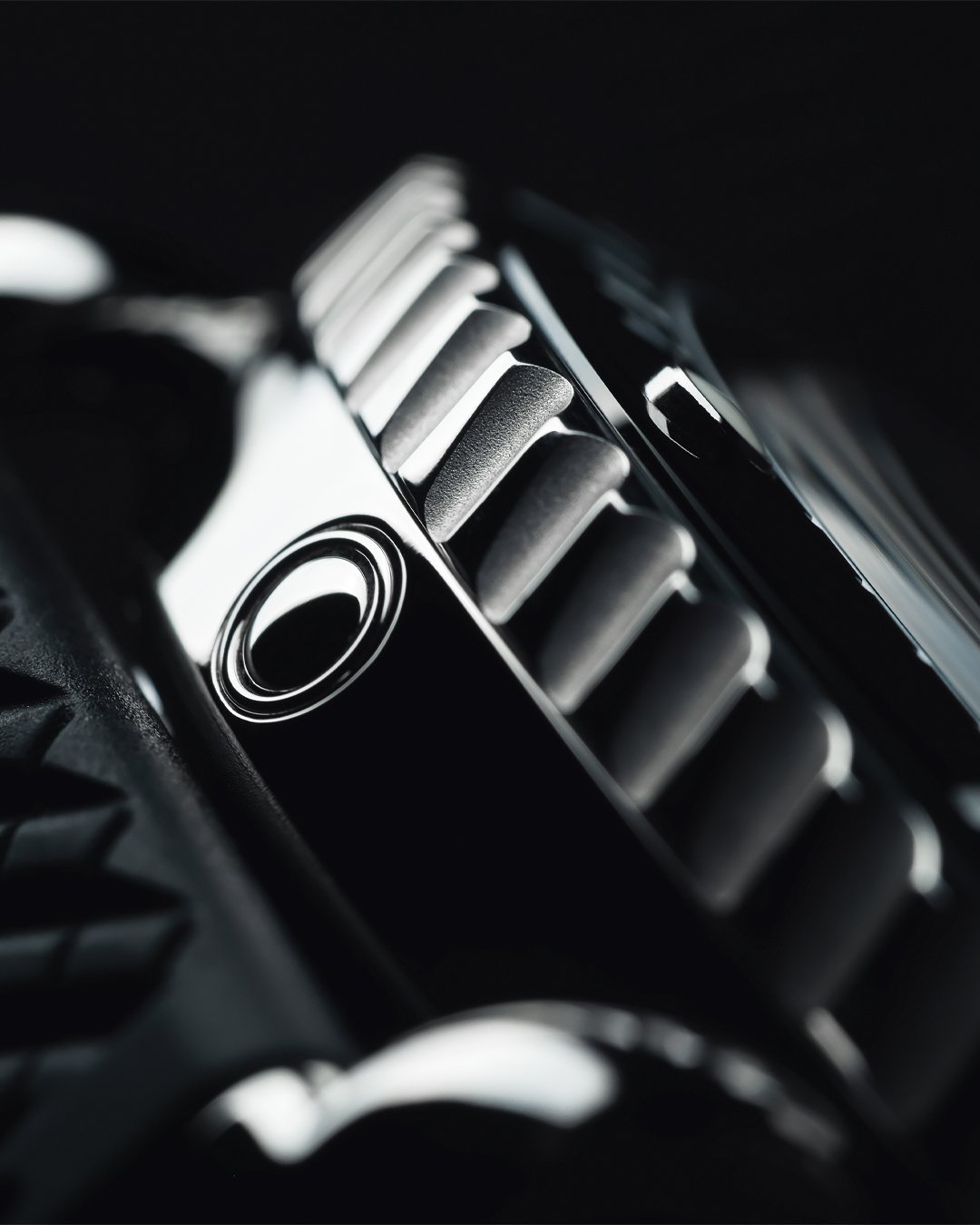
MORAR 310
PROFESSIONAL DIVE WATCH
INSPIRED BY SEARCH & RESCUE
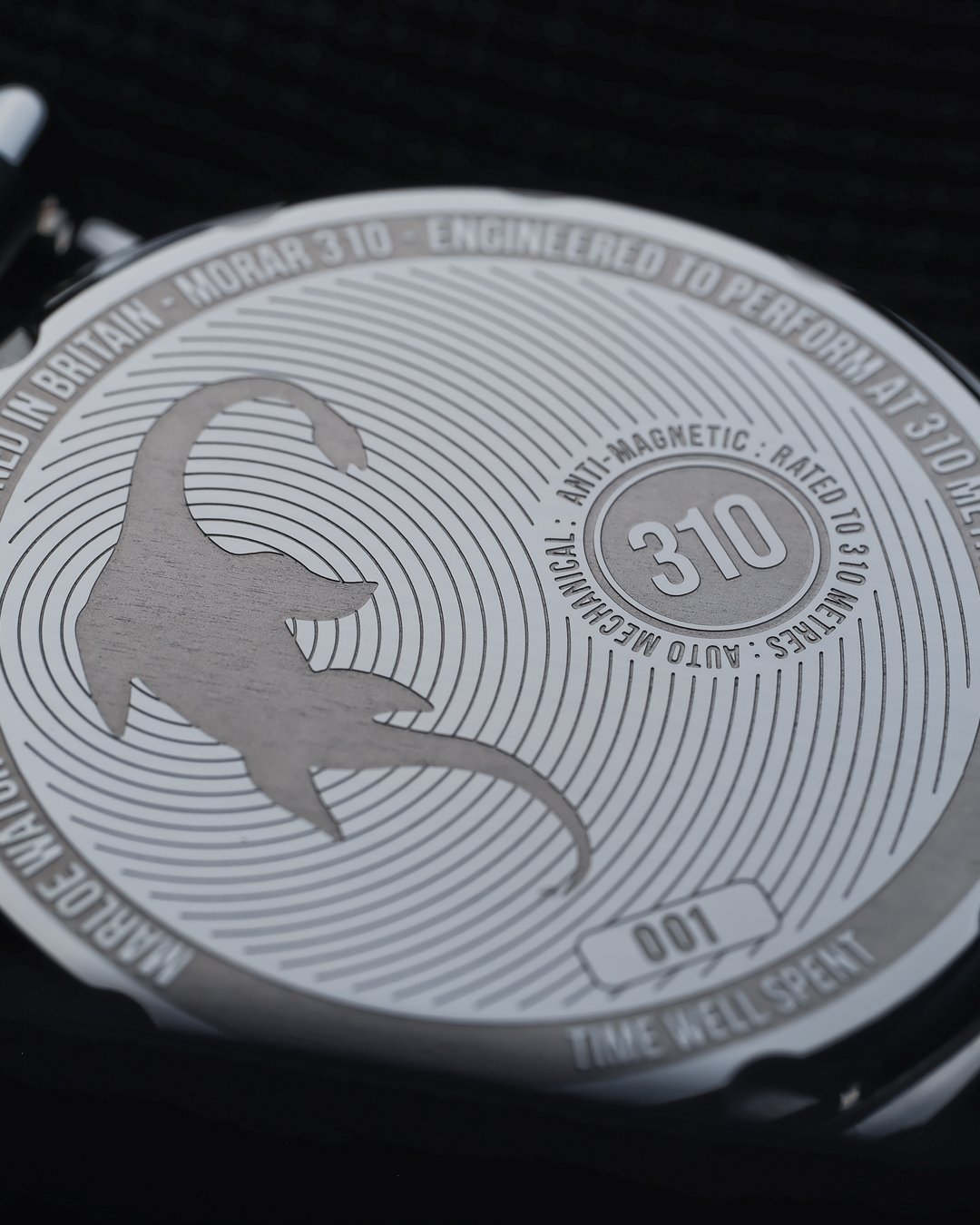
MORAG RETURNS
Welcome to your new Morar 310 Professional Search & Rescue dive watch. This is a watch that embraces adversity. It beckons forth atrocious weather, harsh environments and deep water, because it’s been designed to withstand everything you can throw at it.
In watchland a lot is made of the water resistance of a watch. It’s a good indicator of how robust a watch is in general; a 30m rated watch that shrivels at the sight of water doesn’t fill you with confidence that it could take a knock or survive an unexpected downpour.
The Morar 310 is, as the name suggests, 310m water resistant. It features a helium release valve for saturation diving. It deploys a fully enclosed iron cage to protect the movement from unwanted magnetisation. Sapphire crystal protects the dial and sapphire or ceramic covers the bezel. Marine grade stainless steel 316L is machined to make the case, and a rock solid workhorse Miyota 9039 ticks away deep inside.
It is what you might call a “high performer”. If it can withstand the rigours of North Sea commercial saturation diving, it’ll take the swim, shower, snorkel, dive, jump, search, rescue, kayak, surf, cliff, mountain, shop and, most certainly the office, in its stride.
There’s something reassuring about knowing your watch can go to 310 metres, the depth of Loch Morar in the Highlands of Scotland, the deepest body of water in the United Kingdom and home to Morag, the wee cheeky monster. The Morar 310 will survive where you can’t, and that alone is enough to know this watch means serious business.
We hope you love it. We know you’ll love it, because as you’ll see, it’s the product of doing things as expertly as possible, not as fast as possible.
To the future, and whatever it may hold.
OLIVER GOFFE - OPERATIONS & MARKETING
There’s a reason that Marloe is regarded as the most customer-loyal and friendly watch company around. It’s because of Oliver’s unwavering commitment to doing things the right way; he could be called a perfectionist, but we prefer to call him immensely pernickety.
GORDON FRASER - CREATIVE & PRODUCTION
Design through immersion is what makes each Marloe watch unique. A professional empathiser, Gordon highlights the spirit of pioneering, human endeavour and love of discovery in everything we do. A patriotic Scotsman, lover of pretzels and whisky. Maybe jazz too.
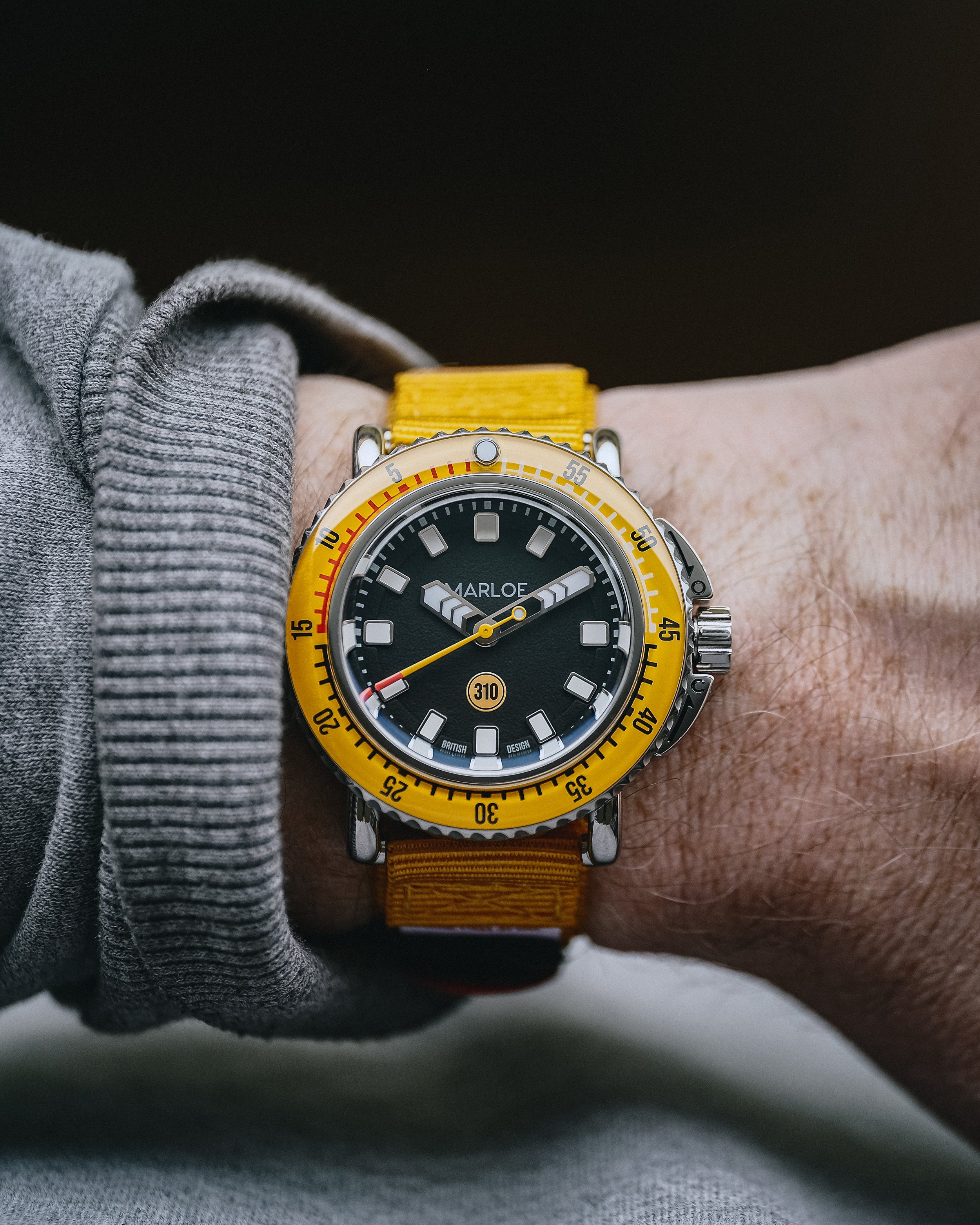
WRESTLING WITH A MONSTER
“In a way, this is my chance to redeem myself.”
Thinking about what I want to design for a watch that has no boundaries in the physical world, I immediately turn to framing what it is I actually want to achieve. Do I want a watch that could withstand a direct hit from an Excocet missile? Do I want a watch that looks great but compromises on something to achieve that design? Or do I want a watch that is extremely capable within the environment in which it might operate, and as a result design something that the layperson (the rest of us) will never test to its limits?
The last of these was of course the route I chose: creating a watch that is supremely capable as an operational dive watch, but trying to give it our own contemporary take on what is the most ubiquitous watch category in the world. Succeeding in that, we could all enjoy the spoils no matter what pursuit we undertake. With careful footsteps however; the last time we designed a watch for the environment it would operate in, we called it the Morar, and it was polarising.
Not in this case. This time, with a decade of experience (compared with 2 years for the original Morar) we took the brief to design a dive watch to its natural conclusion. A watch that satiates all the desires of the market, but avoids homage or influence, mimicry or gimmicks. This is a watch that should look like it belongs at sea, can survive at sea and thrive at sea. It should look like a slice of maritime magic.
Technically speaking this watch, if it’s to take on the Morar mantle once again, had to offer 310 metres of water resistance. As far as dive watches and water resistance go, 200m is the point at which proper SCUBA diving demands are met. The research phase would highlight any additional requirements, though as a baseline, 310m is a pretty solid number to reach, but for belt and braces we’ve tested to 350 metres, just to be sure.
I also wanted to connect to the original Morar design, so that we have a natural progression of design intent, rather than a complete re-think. Unibody case design, rifled bezel, pronounced pip, seashell markers, but without a doubt improvement upon all the areas where the original Morar fell short.
In a way this is my chance to redeem myself. To show I am capable of designing an iconic watch.
—Gordon on a challenging legacy

What is a dive watch?
What does it do?
Why is it even a thing?
Getting started on the design of our next dive watch required the immersive research process to commence. From this deep research and investigation could the purest expression of design be found. It’s why our watches feel like they belong in the worlds from which their inspiration was drawn.
To show the ins, outs and roundabouts of the Morar 310 and why it has come into being, the process we took to research, design and execute it, we created a video series called “The Road to Morar”. You can watch all the parts now, by clicking below.
RE:SEARCH
THE ETHOS
The dive watch industry is flooded with lookalike designs, all building upon the popularity of watches made famous in the ‘50s and ‘60s. The Morar 310 is built differently, designed to look like it belongs in these nautical worlds whilst being professionally functional and strong. Marine instruments and chandlery quite often feature polished chrome finishes, rounded surfaces to shed water and sturdy, well-designed and robustly manufactured components for decades of flawless operation.
It is this sentiment that drives the Morar 310 design. The case is completely mirror polished and is comprises of 3 parts - the main case chassis, the caseback and the uni-directional bezel. To the chassis are bolted several features - sacrificial crown guards protecting a screw-down crown, a helium release valve for saturation divers, a soft-iron anti-magnetic inner cage and powerful tubular-style lugs.
The main case chassis is 41.9mm in diameter and features a silhouette that, when worn, feels very slim, despite its not insignificant 12.05mm assembled thickness (excluding the crystal). The Morar 310 doesn’t exhibit an homage case design, nor does it bend to the demands for cheaper versions of expensive icons.
The Morar 310 is unique.


GOLD KING
There’s always a lead design in the overall process of bringing a unique watch to market. For the Morar 310 it was the Gold King, inspired by the RAF Sea King Search & Rescue helicopters that were a huge part of Gordon’s youth. Growing up in Fife near Leuchars Air Base, where the East Coast SAR helicopters flew out from, these iconic yellow birds demanded respect.
Despite being retired in favour of the modern helicopter for the SAR tactical roles, the Sea King remains to this day the definitive Search & Rescue icon.

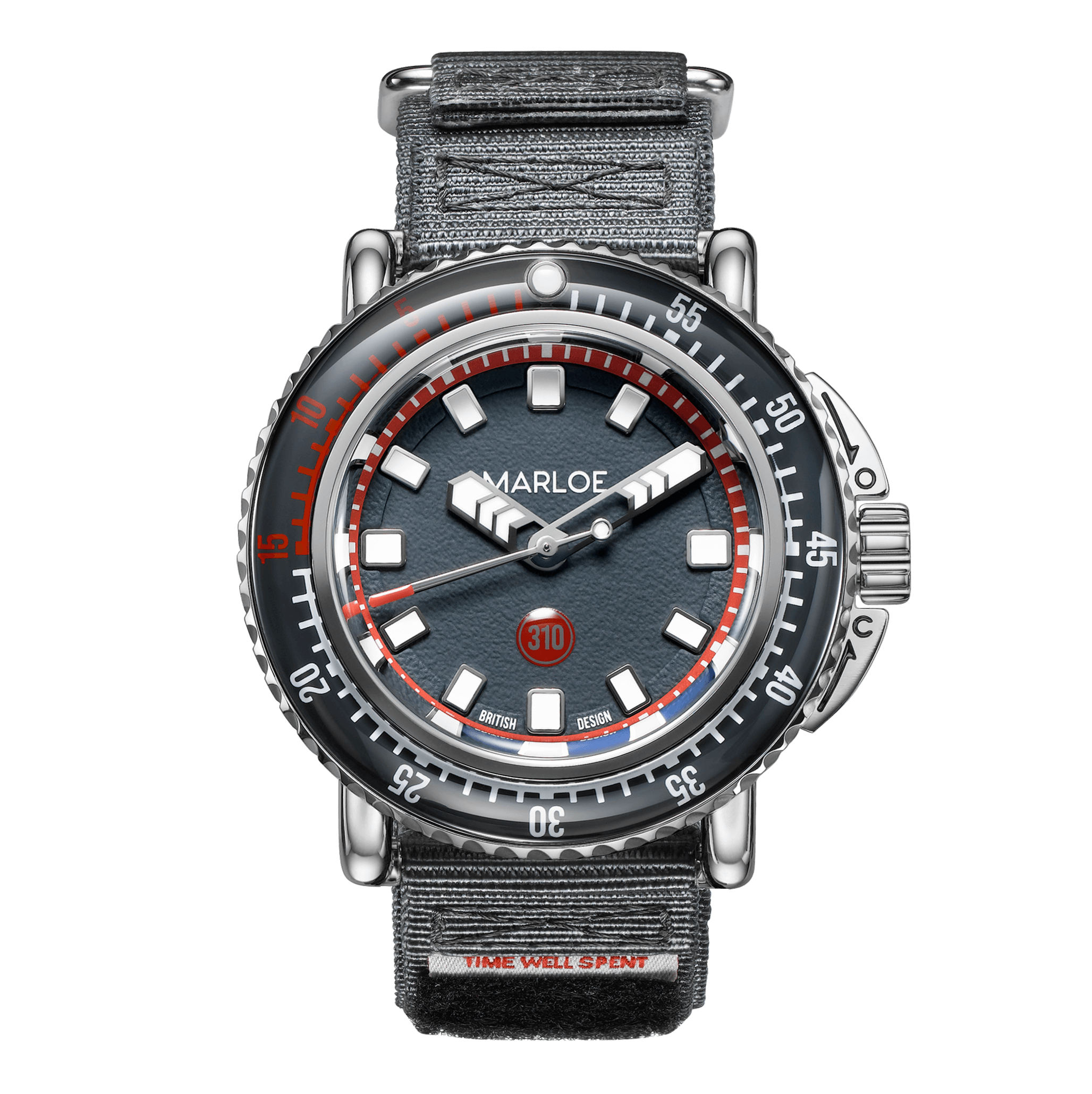
STEEL
The RAF might have had the yellow one, but the Navy had a similarly iconic colourway for their Sea Kings and Wessex SAR helicopters.
But the Steel isn’t just inspired by a colour. It’s inspired by a man who piloted these aircraft both in a Search & Rescue role and as a Test Pilot. Rod Steel carved a career in 771 Squadron, based in RNAS Culdrose, where he’d assist with coastal Search & Rescue, identify engineering issues with the fleet of helicopters through test flights and experience, and was part of the emergency response to the 1979 Fastnet Race disaster.
Rod is an incredibly humble gentleman. Despite the risks he took, the duties he performed and the miracles he worked, it was all just filed under “doing my job”. Well, we’re here to say no, it was a feat of spectacular bravery, skill and heroism that saved lives, helped others, developed safety systems and kept the SAR fleet flying.
To honour Rod and his life’s work, we’ve named the Steel after him, with his blessing. A living hero, and the inspiration behind the Morar 310.
Thank you, Rod.
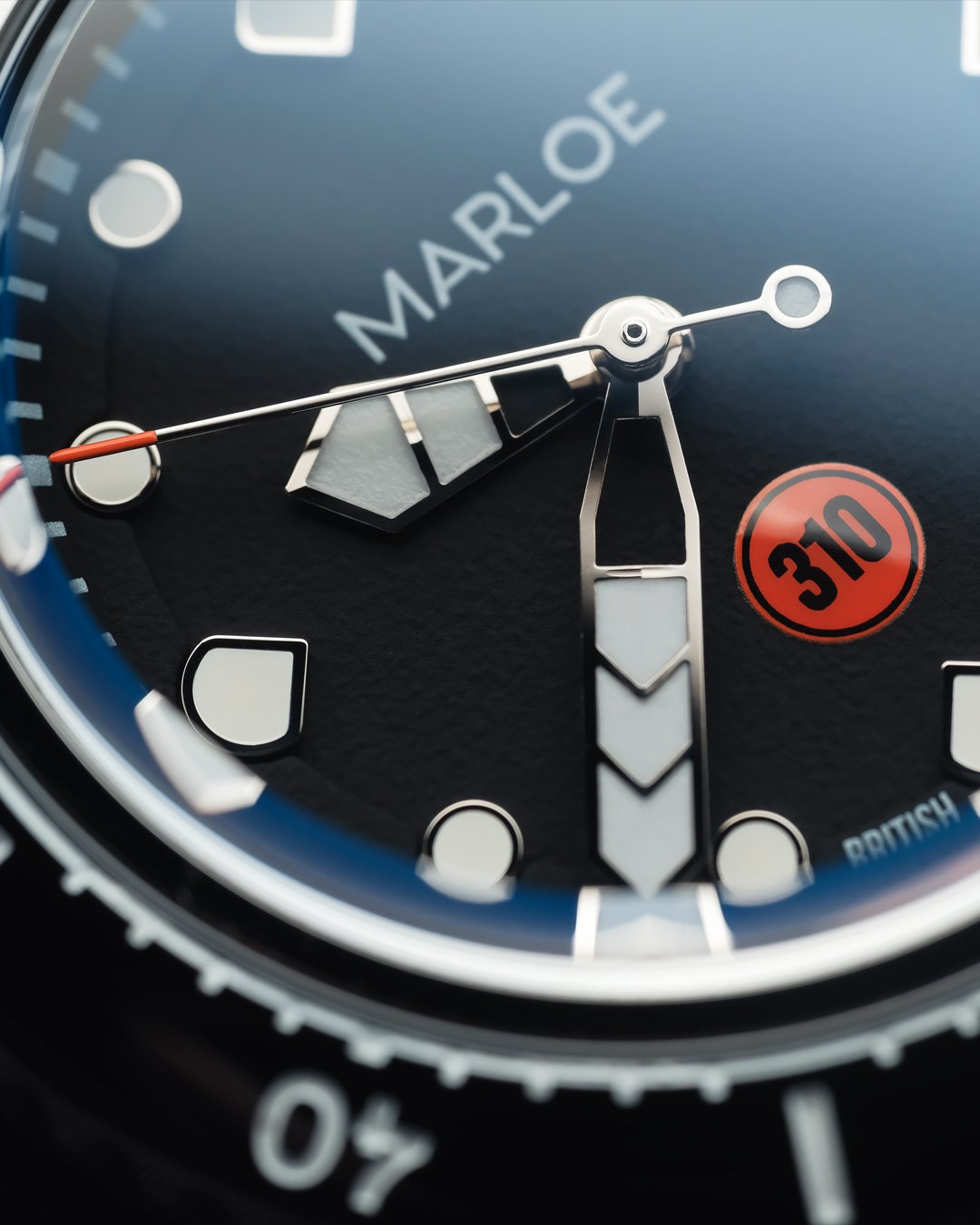

ONYX
This is the one that acts as the bridge. The connection between the dive watch “style” that has been held as the benchmark for decades, and our interpretation of that gold standard. It’s the monochrome, highly legible, simplicity-driven black and white dive watch.
Where others aim for replication, or homage, we aim for originality - something hard to do when the expectations are already set in stone. But with the Onyx we believe we’ve hit the nail on the head. It’s gloriously Marloe, yet still inherently linked to the inimitable dive watch history.
Simplicity is the name of the game here, letting the design speak for itself, rather than through cluttered text or faff. This is pure - inherently easy to read, lustrous with the glossy black ceramic bezel insert, interesting with the orange accents and fantastically bright, owing to the polished hardware.
It goes with anything and everything. Works in any and all environments, and tells the time in a way that feels clean and effortless.
The Onyx is our nod to history.
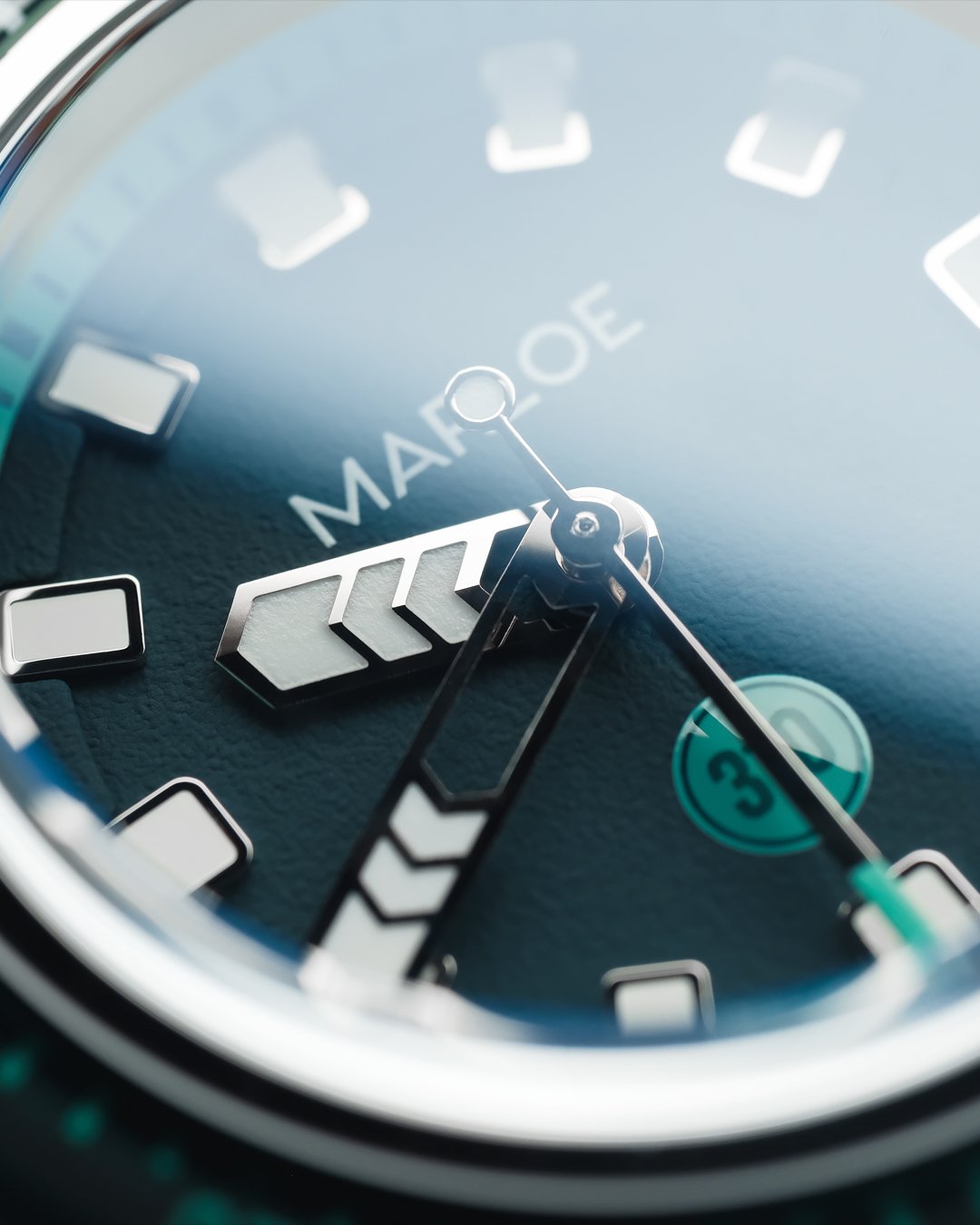

SANNA
The happy accident. The Sanna was borne from a glitch in the matrix, and served up one of the most beautiful colourways we’ve produced.
Rich green ceramic. You don’t see that often. Hand-painted aquamarine detailing. A unique bezel design, and a base of marine green make this a Morar that pops from the wrist, yet still retains its composure, its subtlety.
This was originally going to be called the Green Destroyer, because the gremlin that inverted the colours was over the grey/blue colourway of the Destroyer. Maybe one day the OG will make its way into the world; until then we have this, the watch that reminds us of the crystal-clear west coast waters of Sanna Beach. Paradise on earth.

MARINE GRADE
A watch designed to go anywhere and do anything needs to use materials that can cope with everything. The chassis of the Morar 310, upon which all the other parts are bolted, is the most important to get right.
Sub-par materials on the chassis would corrupt everything thereafter, so we’ve used the finest grade of 316L stainless steel, marine grade and ultra strong, for the case, bezel, crown guards, HRV and crown. All the things that will face the brutal marine environment.

PORT HOLE
Like the case, the window to the dial must be made from the finest grade of robust, resilient materials. There’s literally nothing harder than the sapphire crystal that separates the harsh outside world and the inner workings of the Morar 310.
Flat in profile with rounded top edges, this crystal is coated with 6 layers of anti-reflective coating on the underside, to minimise internal reflection and boost clarity. That tell-tale blue highlight reminds you every time you see it, that the Morar 310 is designed and built to last.

HELIUM RELEASE
Ok, we admit it. This little circle of interest is, to all intents and purposes, redundant for 99% of the folk wearing a Morar 310. It’s the niche facility for the niche diver in a niche environment that prevents the helium rich atmosphere within which they operate to explode the crystal out of the case. You see, for saturation divers this is a real problem, where the pressure of the helium gases expanding inside your watch forces the crystal out from its seal. We don’t want that now, do we?
This is where the helium release valve comes into play, letting those gases safely release themselves from inside the case, without letting any water in. A clever little device that makes the Morar 310 a professional grade device. Yet 99% of us won’t ever need it.
Still. Pretty cool, right?

SAPPHIRE/CERAMIC
The bezel inserts that encircle the dial are made either from the same sapphire crystal as the main aperture, or from ceramic. Two of the hardest materials around.
Why the two types? Well, we wanted to deploy some seriously vivid and lustrous colours in our launch range of Morar 310 Professional Dive watches, but to create such colours in ceramic was, for want of a better word, spenny.
Quite a lot spenny, actually. Too spenny, some might say. So we had to think outside the box, especially so given the lume pip at 12 o’clock needed to poke through the bezel insert from underneath.
Doing it this way allowed us to match perfectly on the Air Models the British Standard colours that we’d selected, while using the colours available in ceramic for the other models.
It turned out pretty special indeed, and the glass refraction and reflection adds even more spectacle to an already special watch.

ANTI-MAGNETIC
One of the biggest issues with using mechanical movements in a modern world is the susceptibility of magnetism making your watch lose a bit of accuracy. Inside those tiny engines is a hairspring, whose coils, when exposed to credit card readers, scanners, laptop hard drives and any other magnetic source, may stick together.
It doesn’t damage your watch at all, just makes it run inefficiently, impacting the accuracy of time keeping.
To prevent this from happening, and as a demonstration of how much we wanted the Morar 310 to be a do-anything watch, we’ve encased the entire movement inside a soft-iron cage. A case within a case.
This inception grade method rebuffs all those wayward magnetism fingers from messing with your movement and keeps it ticking along perfectly.
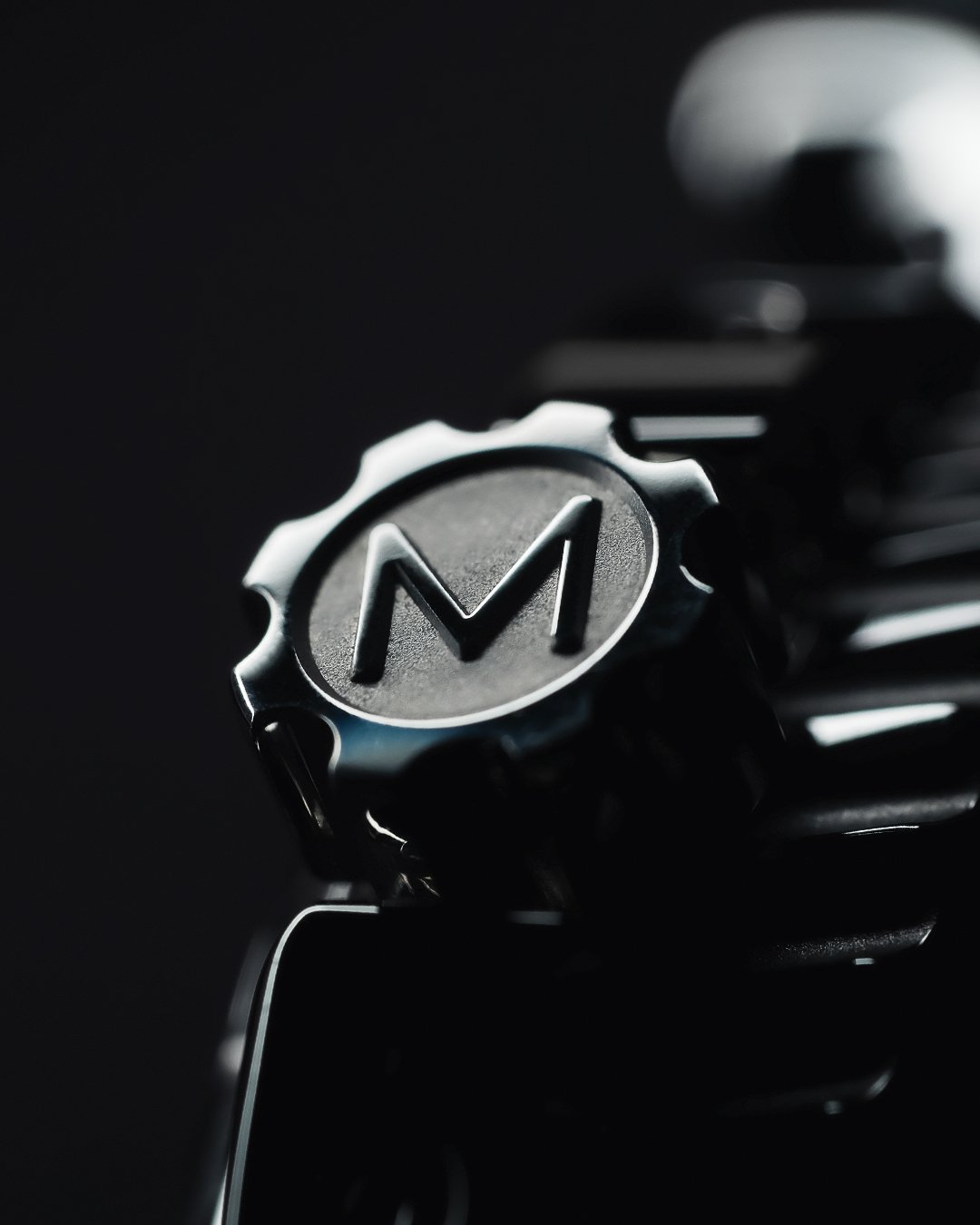
SEALED TIGHT
The weakest part of a watch in terms of water resistance is the crown, because to have a crown work the way we want it to - changing the time, winding the movement up, etc - we need to drill a great big whacking 1mm hole in the side of the otherwise watertight case.
Holes in ships lead to catastrophe, and the same is true of a watch case. We can prevent such ingress using 2 O-rings on the stem of the crown, that mechanically impede water from getting past them. But one further step can make it nigh on impossible.
A screw-down crown features 2 more seals inside a threaded tube which, when tightened against the case, seals the entire system,preventing any water getting in, even at 310 metres of depth. That’s 440psi.
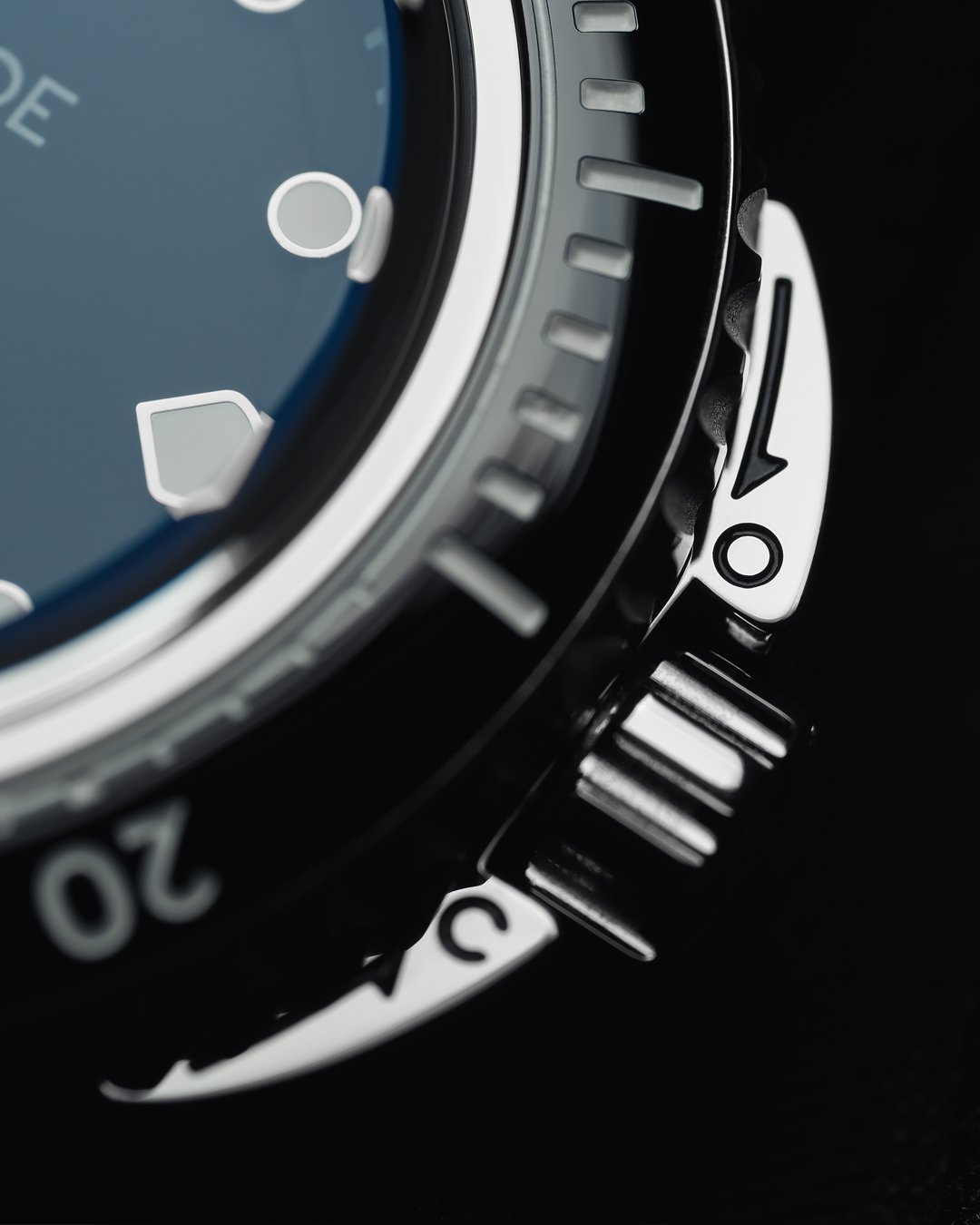
CROWN GUARDS
Given that the sealed crown system is doing such an important job, it would be a bit miserable to have it compromised by whacking the crown off a door, or a submarine hatch, or a diving bell. Which is why we’ve installed sacrificial crown guards on the Morar 310.
This solid block of 316L stainless steel bolts to the side of the case and, if damaged, can be removed and replaced. It’s there to deflect any blows away from the crown, take the hit for the team. It also serves as handy reminder for which way the crown seals to the case: O for Open. C for Close.
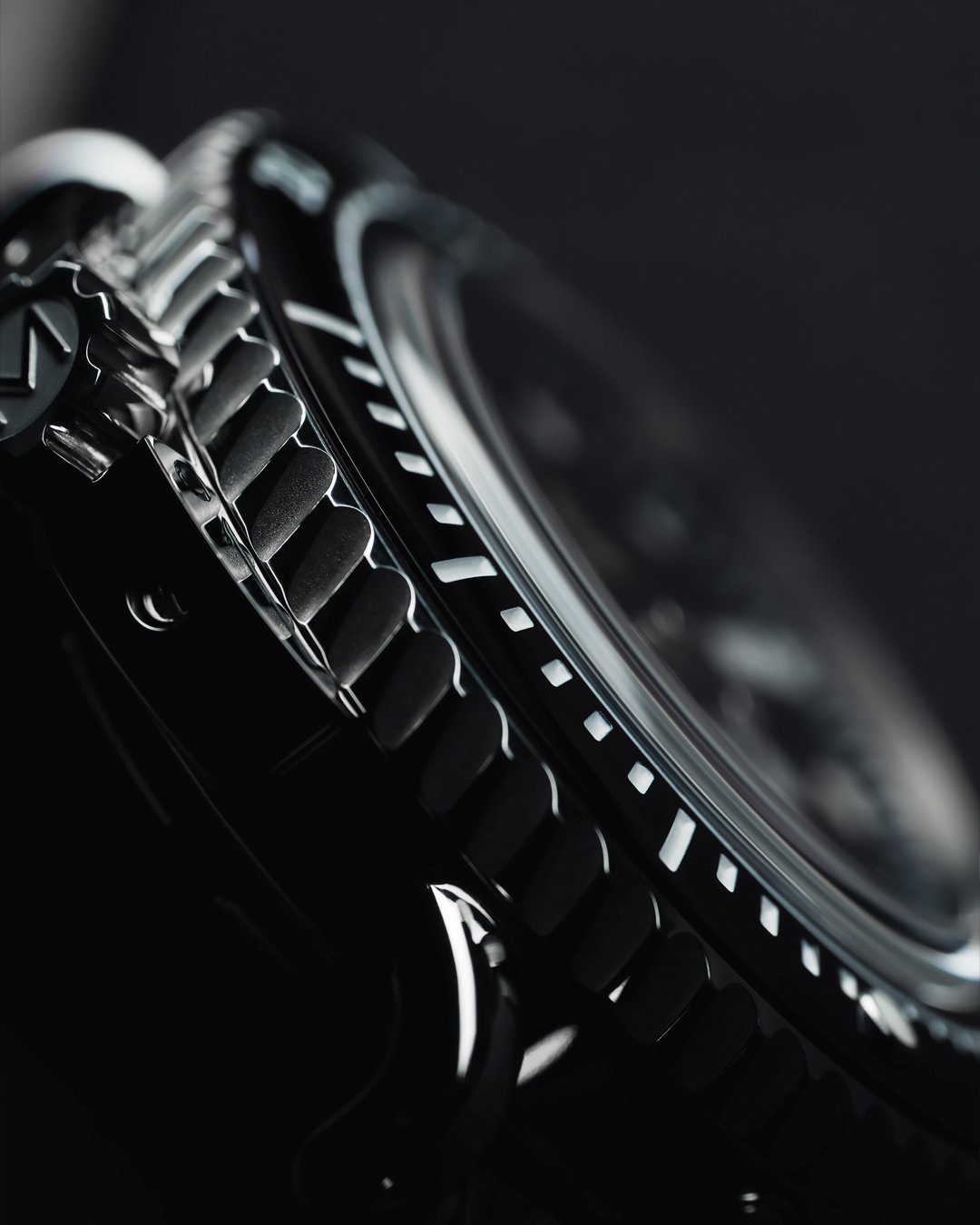
ONE WAY ONLY
Dive watches are effectively redundant in the modern age of dive computers. As a precaution, even a dive computer will be backed up by another dive computer. So the dive watch, and the reason for it existing, are sort of not really relevant. But a lot of divers still stand by them as rock solid, “old world” methods for safety.
That’s the reason the bezel on the Morar 310 moves in one direction only - safety. Countdowns and the ability to measure elapsed time are crucial for deeper diving, so that decompression doesn’t become an issue. The uni-directional bezel therefore only allows time to be shortened, not lengthened, making this as much a safety device as it is a tool.

LUMINESCENCE
The ability to differentiate the hands in complete darkness, quickly and efficiently, is one of the prerequisites for a high-spec dive watch. We’ve taken this requirement to the extreme, with two colours of Superluminova X1 - the very best luminous compound around today.
Appearing white in the daylight, the hour markers, hour hand and seconds hand counterweight all glow blue in the dark.
The minute hand, 12 o’clock marker and the bezel pip all glow green in the dark. The link between the minute hand/pip is obvious, while the 12H pip is for orientation in the darkness. Simple and effective.
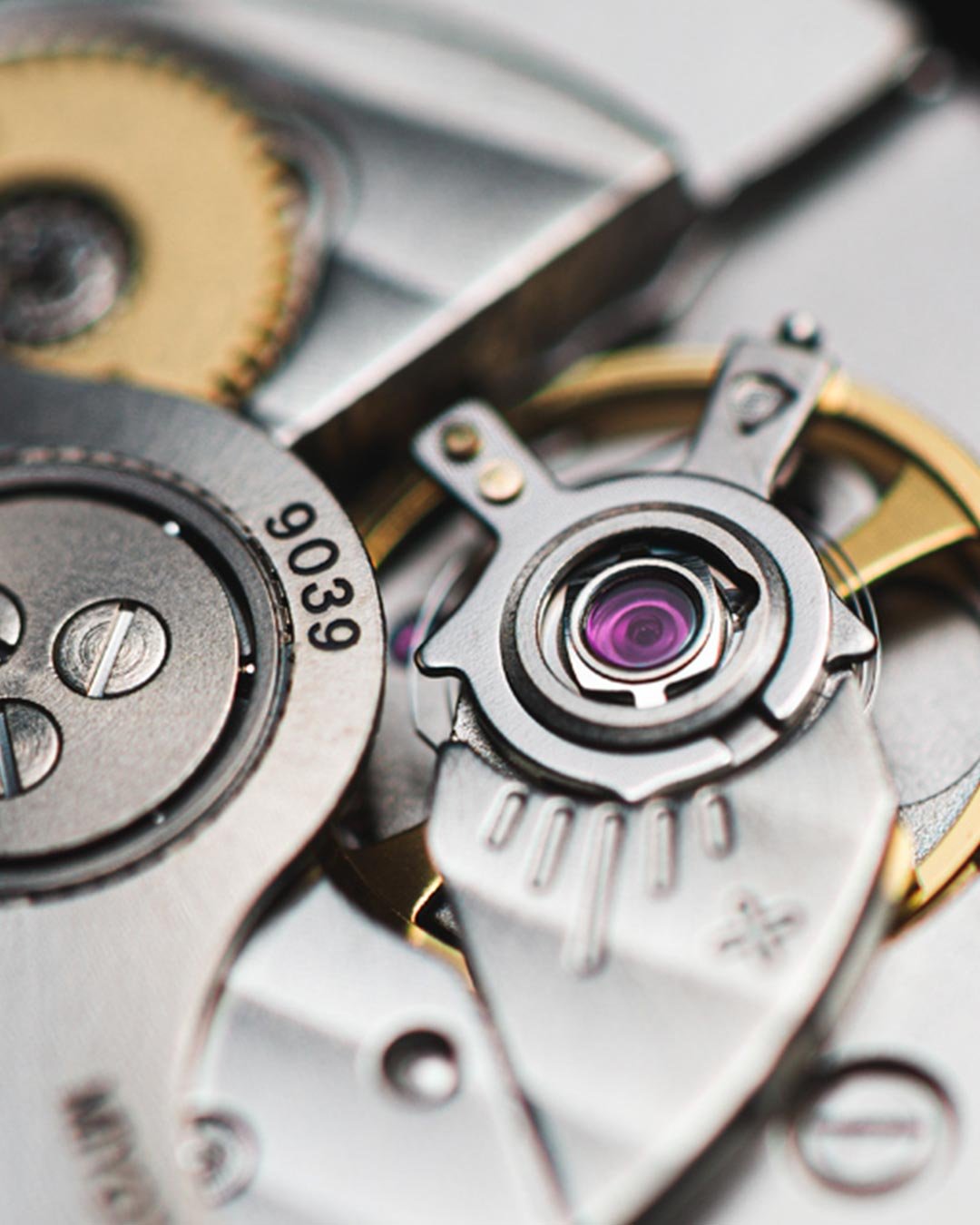
THE ENGINE
How else to say this? The Miyota 9039 is the best mechanical movement around today, measured by cost and reliability, accuracy and availability.
This is the rock solid mechanical engine that has powered more than 6,000 of our watches so far, and of those 6,000 watches, zero have failed us. We can’t say that about our Swiss movements.
It’s thin. It’s accurate. It’s wonderfully simple. Yet simplicity in this context comprises 100 tiny little parts all coming together to mechanically release energy over 40+ hours to show us the time of day.
Magnificent. The Morar 310 needed a special movement, and the Miyota 9039 blasts it out of the park.

OPERATIon
SCREW-DOWN CROWN
Your crown’s job is to set the time, wind the movement and interact with your Morar 310. It’s also the place where water is most likely to enter your watch, so we’ve used a double-sealed stem/crown tube and two additional screw-down seals inside the crown itself, to protect your watch from water ingress.
Because of the screw-down seal, you’ll need to unscrew the crown first, before you’ll be able to interact with the movement. Turn the crown counter-clockwise until it pops out of the threads.
THE PROTECTOR OF WATER RESISTANCE
WINDING THE MOVEMENT
The movement inside your Morar 310 is an automatic movement, which means that, so long as you move around, walk, jump or swim, the oscillating weight (rotor) will rotate around the movement and inject energy into the mainspring, keeping it topped up and running forever more.
If your movement runs out of mainspring energy, you’ll need to introduce some finger-powered charge by winding the crown clockwise in the unlocked position.
GIVING YOUR MOVEMENT ENERGY
CHANGING THE TIME
To change the time, pull the crown out from the winding position, away from the case. You’ll feel a click and you’ll know that the keyless works have been engaged, allowing you to move the hand position around the dial to align with the time of day.
Confirm the hand positions by pushing the crown in towards the case. You’ll once again feel a click, telling you that the keyless works have been disengaged, and you’re free to wind the movement further, or screw the crown back onto the case.
ADJUSTING THE HAND POSITION
SEALING THE CROWN
Once you are happy with the way your Morar 310 hands are pointing, you’ll need to screw the crown back onto the case for maximum water resistance. Not carrying out this step will make your Morar 310 susceptible to water ingress if you take it into water. You must seal the case up again.
To do so, push the crown towards the case as you wind the crown clockwise. The threads on the case will soon engage, bringing the crown towards the case until you can’t wind it further. Make sure it’s tight. Once you’ve done that, your Morar 310 will be rated to 310 metres once more.
MAKE YOUR MORAR WHOLE AGAIN
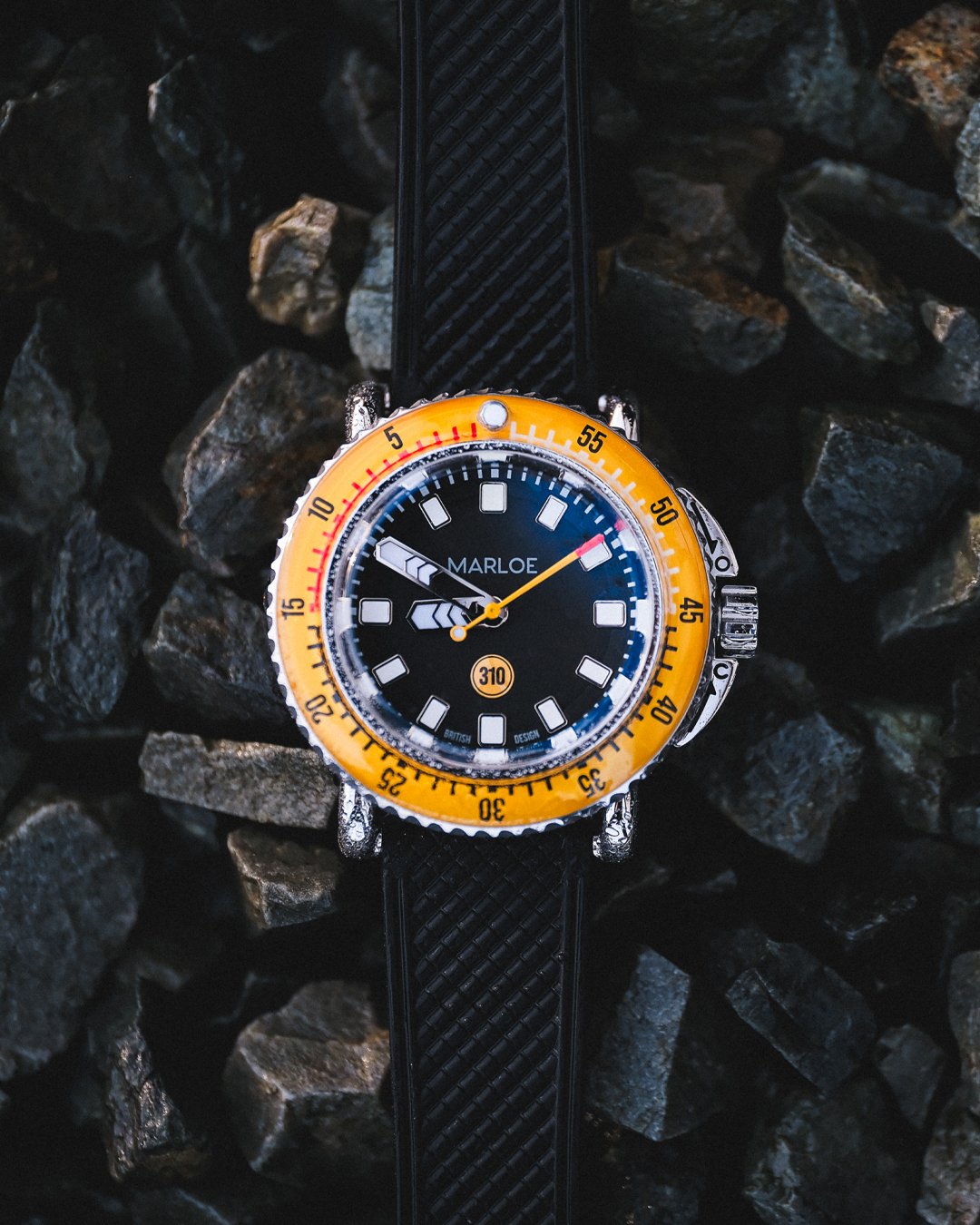
MORAR 310
PROFESSIONAL SEARCH & RESCUE DIVE WATCH
-
316L STAINLESS STEEL CASE
SOFT-IRON CAGE FOR FULL ANTI-MAGNETIC PROTECTION
TUBULAR LUG DESIGN - 20MM WIDTH
HELIUM ESCAPE VALVE FOR SATURATION DIVING
DETACHABLE CROWN-GUARDS
310 METRE WATER RESISTANCE
SAPPHIRE CRYSTAL WITH ANTI-REFLECTIVE COATING
SCREW-DOWN CROWN
CERAMIC/SAPPHIRE BEZEL INSERT WITH LUMINOUS PIP
SWISS SUPERLUMINOVA X1 BL/GL LUMINOUS COMPOUND
-
BATCH INFORMATION:
FIRST EDITION BATCH PRODUCTION: TOTAL 500 UNITS
-
AUTOMATIC MECHANICAL MOVEMENT
11 1/2 ''' LIGNE
3.90MM HEIGHT
28,800BPH
42+ HOUR POWER RESERVE
HAND-WINDING CAPABILITY
24 JEWELS
HACKING SECONDS
CLOCKWISE ROTOR WINDING
ー10 ~ +30 SEC/DAY
MADE IN JAPAN
-
A mechanical movement, like a car engine, uses oils to lubricate the moving parts. Over time this fine grade of oil can become gloopy, causing your movement to lose accuracy. Every 4-5 years, think about having your watch cleaned and re-oiled by a professional - it’ll keep everything ticking along nicely.
The Morar 310 enjoys a 2-year limited warranty which covers manufacturing defects. T&C - see our website.

